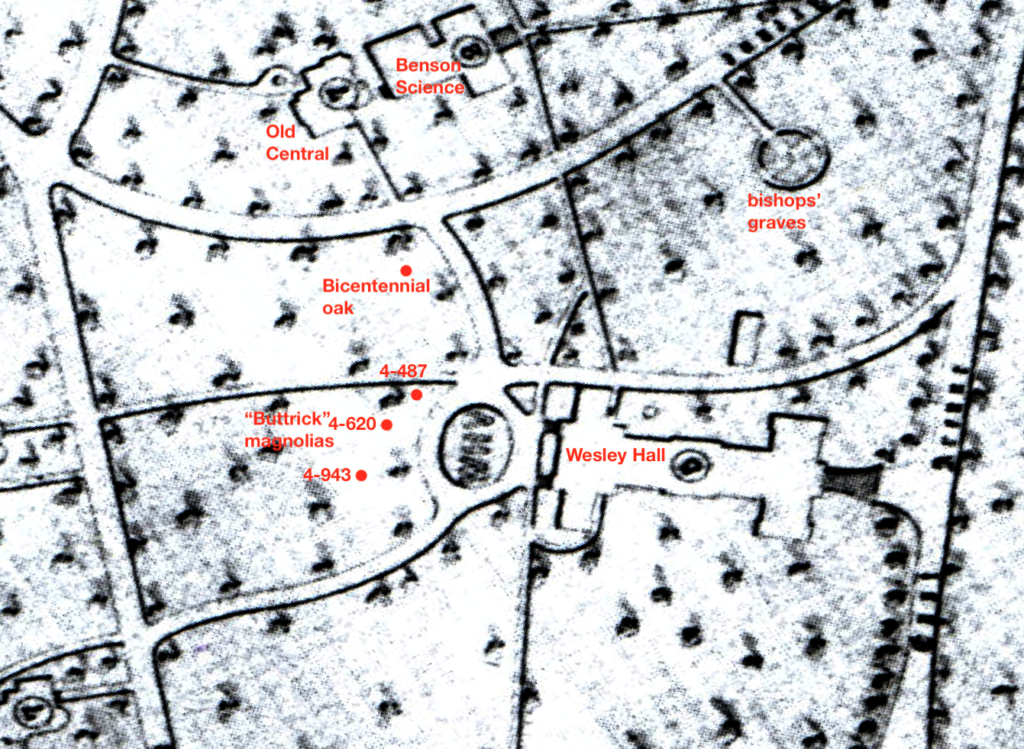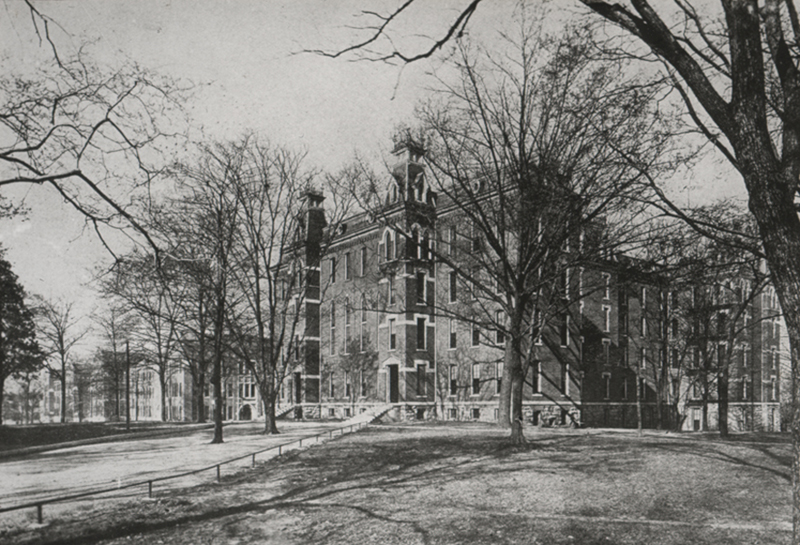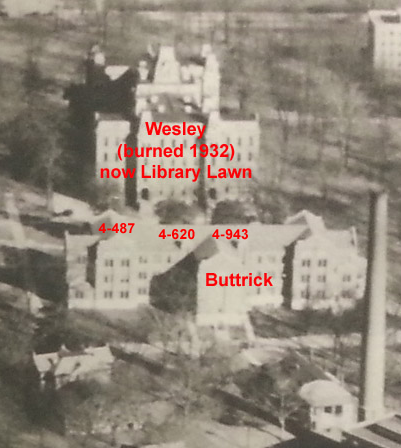History: Magnolias by Buttrick Hall

1897 map showing the location of the three large magnolias currently in front of Buttrick Hall. 1897 map from Vanderbilt University Special Collections and University Archives Campus Map Collection.
Although it would appear that these trees were planted as part of the landscaping for Buttrick Hall, they are actually much older than that building. Rather, they were planted along the road that once passed by the west entrance of the giant Wesley Hall that formerly stood in the center of what is now Library Lawn.
As an aside, one of the interesting features of the 1897 map is the circular drive surrounding the letters “WHV”. This spot is approximately in the same place where the Harold Sterling Vanderbilt statute is located. We don’t know how “WHV” was written in the circle – perhaps a pattern of stone or even plants. But WHV is certainly the initials of William Henry “Billy” Vanderbilt, son of Cornelius Vanderbilt whose donation funded the foundation of the university. In 1880, Billy Vanderbilt donated the money to construct Wesley Hall and his son Frederick helped to cover the insurance shortfall after the building burned.

Wesley Hall seen from the southwest. The road leading to the entrance can be seen in the lower left. Vanderbilt University Special Collections and University Archives photo.
This view shows the west entrance of Wesley Hall. It was taken between 1928 (when Garland and Calhoun Halls visible in the background were built) and 1932 (when Wesley Hall burned to the ground). We know that the photo was taken in the wintertime since most of the trees do not have leaves. But at the far left of the photo is a tree with evergreen leaves and that tree is likely to be one of the three magnolias — probably 4-943.

Aerial photo taken about 1930 showing the tops of the three large magnolias visible over the top of Buttrick Hall. Image enlarged from Vanderbilt Campus Planning and Construction, Facilities Information Services photo
In photos taken soon after Buttrick Hall was built in 1928, the three magnolias can already be seen over the top of the building. Given their large size, they were probably planted when Wesley Hall was constructed in 1880 as part of its landscaping. Magnolia 4-487 has the distinction of being the largest known southern magnolia in the arboretum.
Return to the historical tree tour page for magnolia 4-487.
